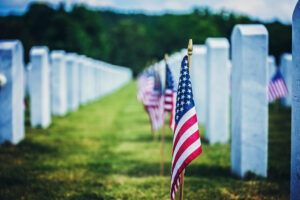Supporting U.S. Military Veterans through their transition to the civilian workforce is at the heart of what we do at VSO. Every month on The 11th, we highlight a U.S. Military Veteran with unique insights and advice surrounding the topic of military-to-civilian career transition. This month, Michael Curry joins us from the Emerald City to share his insights from his transition from the United States Army to the field of technology.
From a young age, Michael felt drawn to serve in the U.S. Military due to his family’s legacy of military service. According to Michael, “Growing up as a kid, I didn’t really think you could make a living outside of the military.” Following in the footsteps of his father, an Air Force veteran, and his grandfather, a WWII Navy veteran, Michael enlisted in the Army.

Through his ten years of service in the Army, Michael affirms that he “became a different person, for the better.” He looks back on his military service with pride in his accomplishments and gratitude for the manifold opportunities that only a military career can provide.
When the time came to transition into a civilian career, finding an experienced and knowledgeable mentor was key to Michael’s success. Working with his mentor, Michael was able to translate his military experience to the civilian workforce and adapt to a career in technology. He encourages transitioning servicemembers to face challenges head-on, emphasizing the need to “out-hustle everybody else” to achieve success.

Looking back on his transition from the military, Michael urges employers to recognize and value the unique skills military veterans can bring to the table. By providing opportunities for hands-on experience, employers can give transitioning service members the chance to prove their unmatched determination, work ethic, and problem-solving skills.
Michael’s words echo the mission at the heart of VSO: to recruit, hire, and train military veterans in the technology industry. We encourage every company to learn how to unlock the potential of America’s most highly trained and deserving workforce by echoing Michael’s challenge to promote Military mentorship and internship programs.
Watch Michael’s video to learn the importance of mentorship during a transition from the military and share with a transitioning service member or employer who would benefit from Michael’s insights!



















